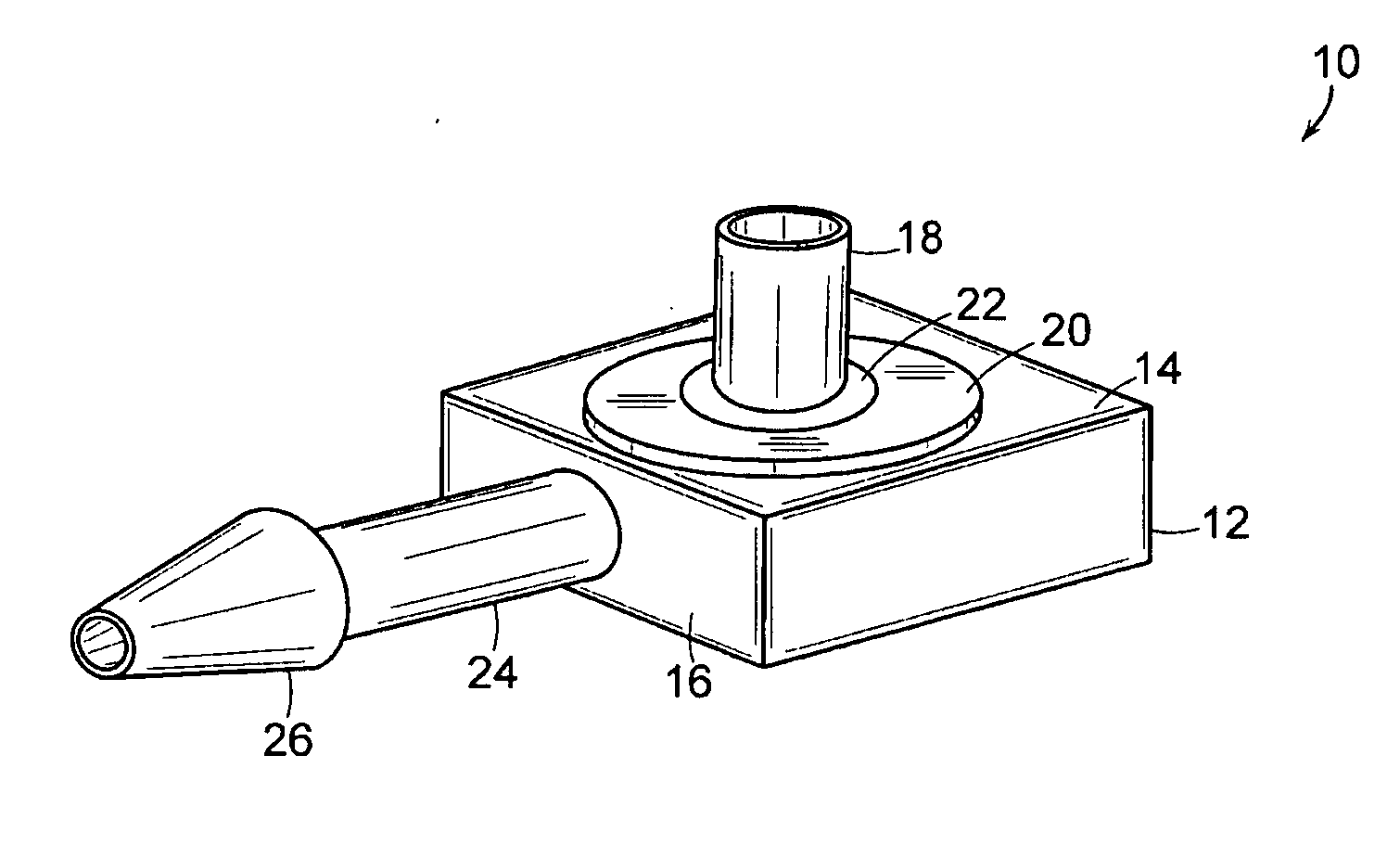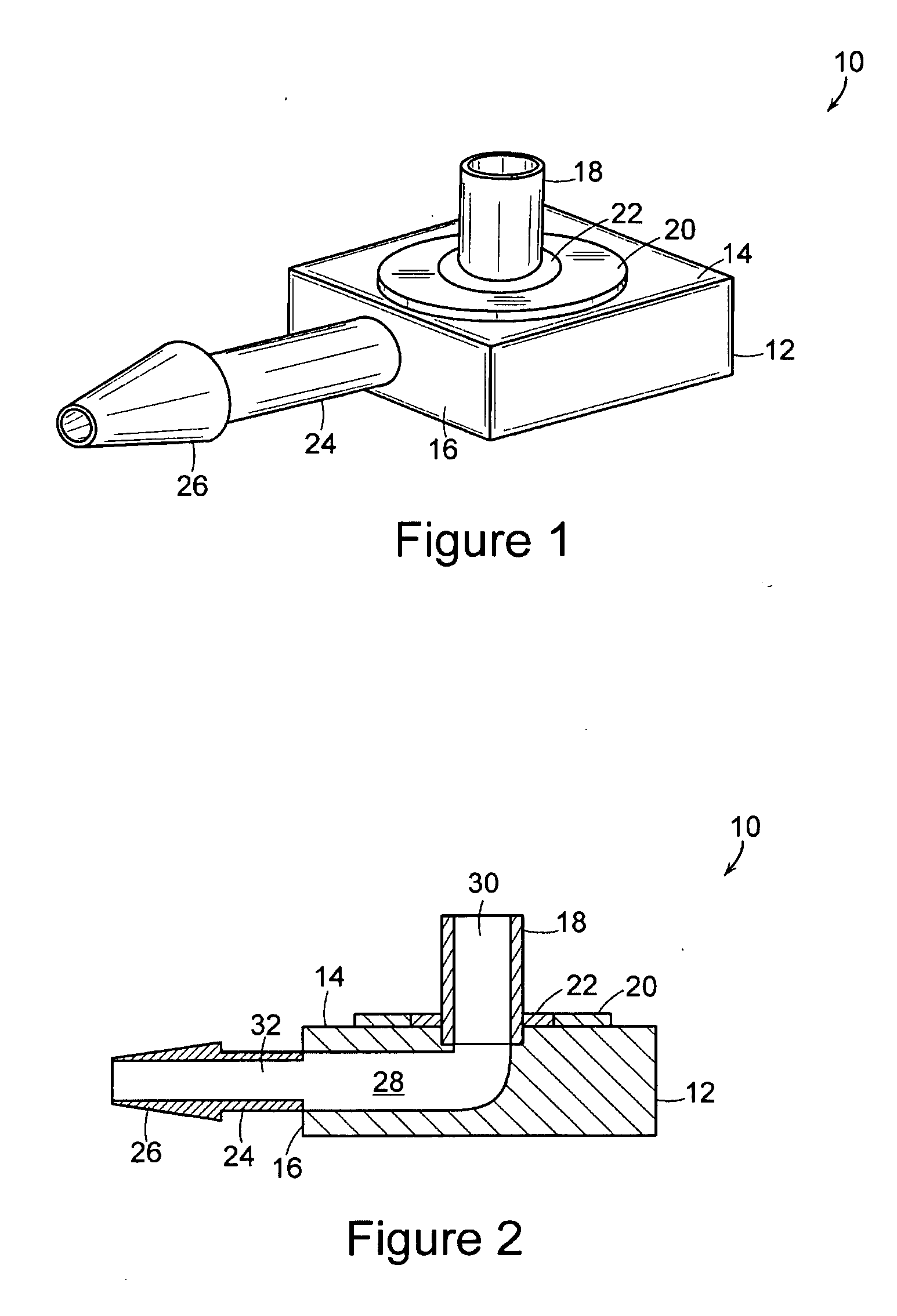Implantable medical device
a medical device and implantable technology, applied in the field of long-term, implantable devices, can solve the problems of increasing the morbidity rate and cost of catheter use, cvc designs seriously compromising the skin's ability to protect the body from infection, and the patient may place a catheter in the blood vessel for a relatively long time, so as to achieve the effect of less bio-absorption, less bio-absorption and convenient us
- Summary
- Abstract
- Description
- Claims
- Application Information
AI Technical Summary
Benefits of technology
Problems solved by technology
Method used
Image
Examples
Embodiment Construction
[0022] The present invention includes an implantable medical device 10 that is well adapted for providing long-term access to the inner physiology of a patient. In particular, the present invention is readily usable as a tissue ingrowth cuff or similar device for use in a patient requiring various kinds of catheterization or dialysis procedures. As the present invention includes bio-absorbable components, promotes a large degree of tissue ingrowth during the initial phases of healing, but still enables the device to be easily removed after the healing process is completed.
[0023]FIGS. 1 through 4 are various views of the device 10 of the present invention in one of its preferred embodiments. The device includes a body portion 12 that defines a first surface 14 and a second surface 16. In preferred embodiments, the first surface 14 and the second surface 16 are mutually orthogonal, and more preferably, the first surface 14 and the second surface 16 are arranged such that lines normal...
PUM
 Login to View More
Login to View More Abstract
Description
Claims
Application Information
 Login to View More
Login to View More - R&D
- Intellectual Property
- Life Sciences
- Materials
- Tech Scout
- Unparalleled Data Quality
- Higher Quality Content
- 60% Fewer Hallucinations
Browse by: Latest US Patents, China's latest patents, Technical Efficacy Thesaurus, Application Domain, Technology Topic, Popular Technical Reports.
© 2025 PatSnap. All rights reserved.Legal|Privacy policy|Modern Slavery Act Transparency Statement|Sitemap|About US| Contact US: help@patsnap.com



